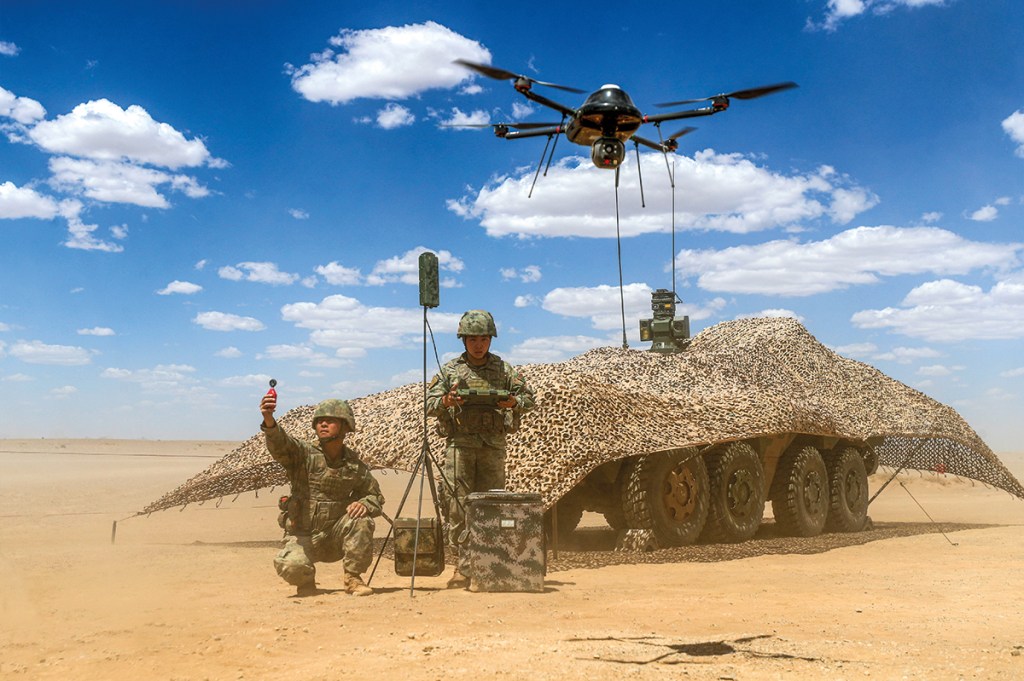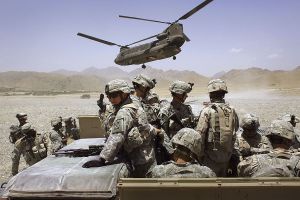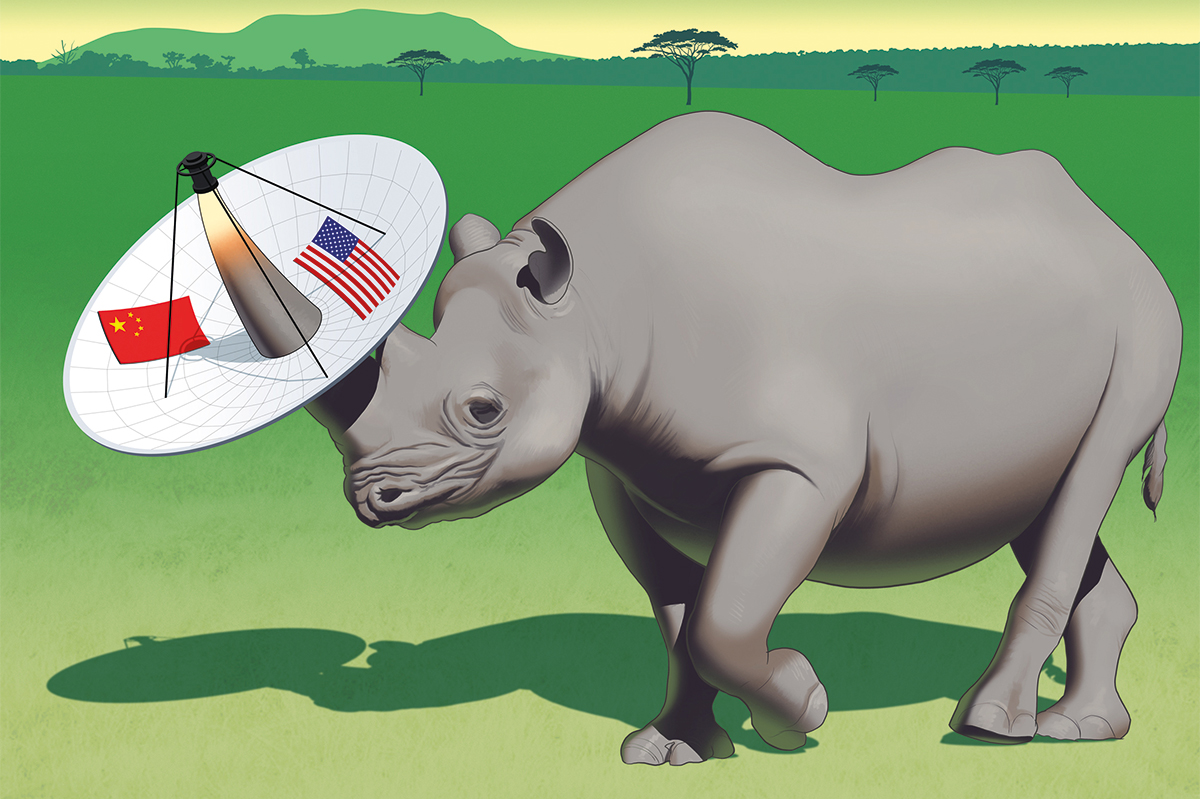“The number (of kills) could have been higher. We showed restraint.” – Pakistan’s Air Vice Marshal Aurangzeb Ahmed
“Godzilla 3? Godzilla 3? … Explosion in Air.” – Indian Air Force flight radio
“China’s hypersonic missiles could destroy US aircraft carriers in just 20 minutes.” – US Defense Secretary Pete Hegseth
Historians of the future will need a word or phrase to describe the shock and the disorienting anxiety the West will feel in the coming months as it realizes that China has caught up with – even surpassed it – in technological capability. We could call these “DeepSeek” moments, named after the recent jolt to the western psyche caused by the astonishing capabilities of Chinese artificial intelligence. But the revelations to come about China’s military technology and war-fighting powers may be even more disconcerting.
Why are the DeepSeek moments coming now? There are two reasons. The first is that China is beginning to fully utilize its human capital. In the early 21st century, just 5 percent of Chinese students could attend college – but now that percentage is ten times larger, comparable to the richest western countries. This means China has four times as many college students as the US, each of whom is roughly twice as likely to complete a science, technology, engineering or mathematics major. The rate of production of young scientists and engineers is almost ten times as large as in the US and the total pool of Chinese college graduates with AI training is comparable to the number produced by the whole of the rest of the world.
Second, spending on research and development (R&D) in public and in private in the US and China is now similar, at $1 trillion PPP (Purchasing Power Parity) in each country. It’s important to talk about PPP dollars because the cost of research is dominated by the cost of salaries and equipment that are determined locally in each country. The cost to hire an engineer in China is less than in the US, but recently even the cost of laboratory equipment and infrastructure is lower, since it can be sourced domestically rather than imported. Because R&D spending is growing more quickly in China, we can project that it could be 50 percent larger than in the US by 2030. This trend is reflected in China’s rapidly accelerating output of highly cited research papers, patents and new products.
These observations are general – they apply to research areas as diverse as solar panels, batteries, semiconductors, drug discovery, satellites, rocketry, AI, robotics and many more. So brace yourself for numerous DeepSeek moments in the future – until at some point they no longer surprise us.
It is difficult to adapt to the dramatic changes taking place in China over only ten to 20 years when the rest of the world is changing at a much slower pace. For example, many observers still attribute Chinese economic competitiveness to low wages, when in fact China has already surpassed all western countries in the number of robots per human worker in its factories. US-China competition in AI is intense and closely monitored. Experts realized almost immediately that DeepSeek’s open-source models were almost as powerful as the leading closed US models – as well as being more efficient to operate – but it took financial markets several weeks to react. Updates of mental models take time and they’re psychologically uncomfortable.
It is harder to evaluate how advanced China is in its military technology. Some would argue that it can only be fully tested in combat; this spring’s India-Pakistan conflict provides important new information. Most western analysts believe that Chinese J-10C fighter jets and PL-15 missiles performed well – shooting down several Indian fighters, including at least one advanced French-made Rafale jet. Importantly, this was the first large-scale case of entirely Beyond Visual Range aerial combat, with more than 100 planes: the pilots never saw each other. Victory was determined by sensor fusion – the ability of ground radar and radar systems on missiles, fighters and planes to communicate with each other in real time. It is believed that the J-10Cs operated in passive mode (radars off, making them hard to detect) while receiving targeting information from ground radar.
Close observers, including Putin, have noted Chinese military R&D has surpassed Russia and the West
The PL-15, which is one of the most sophisticated and longest-range missiles in use, received targeting information from a network of sensors, only using its own advanced radar system in the final moments before impact. The Indian fighters may not have detected the PL-15 missiles until it was too late to react.
Many analysts believe this brief conflict reveals that China has the key capabilities required to dominate future air combat: sensor fusion, edge intelligence (in the missiles and eventually drones themselves), and long-range strike capability. Westerners tend to have an outdated mental model of Chinese military technology – that it is mostly borrowed from the Soviets or stolen from the West. But close observers, including Vladimir Putin, have noted that Chinese military R&D has now surpassed both Russian and western capabilities in key areas.
The J-10C is not even a top-of-the-line Chinese fighter jet. In fact, it is mainly produced for export now that the more advanced fifth-generation J-20 has reached the mass-production stage. China is already testing sixth-generation fighters, which has shocked American observers. Even the PL-15 missiles used by the Pakistanis were reportedly the less effective, export version.
Given this impressive progress, what is the big picture? What is the balance of power in the Western Pacific, where a US-China conflict is most likely to be fought? Who will be the hegemon in Asia, the region that dominates global economic activity?
In PPP dollars the Chinese economy is significantly larger than the US economy: 33 trillion vs 25 trillion last year. And remember, China’s total electricity production is almost twice as large that of the US. Consequently, China has the potential to dominate an arms race.
To take an extreme example, its military ship-building capability is more than 200 times larger than that of the US. Just as the PL-15 allowed Pakistan to outrange the Indian air force, the Chinese have developed weapons that allow long-range strikes covering the Pacific. They mass produce ballistic and hypersonic missiles capable of hitting US aircraft carriers and bases as far away as Guam. A network of satellites, over-the-horizon radars, drones and missiles allows the People’s Liberation Army to monitor and strike all surface ships in the Western Pacific.
We are witnessing a tectonic shift in power dynamics. If America wants to compete, it must reimagine its strategy
The recent challenges faced by the US Navy in the Red Sea do not bode well. Despite the relatively unsophisticated nature of Houthi weapons – missiles and drones supplied by Iran – the US has struggled to secure maritime routes there. Commercial shipping is repeatedly disrupted. To counter these threats, American carrier groups have expended billions on missile interceptors and incurred massive operational costs. Reports even indicate that Houthi surface-to-air missiles came perilously close to downing advanced US aircraft, including F-16 and F-35 stealth fighters. These incidents underscore a critical vulnerability: even rudimentary systems, when deployed asymmetrically, can overwhelm technologically superior forces.
US Secretary of Defense Pete Hegseth, to his credit, has emphasized the existential threat posed by China’s hypersonic missiles to US carrier strike groups. If low-cost, low-tech adversaries like the Houthis can strain America’s naval dominance, the implications for a confrontation with a competitor like China – armed with cutting-edge hypersonic and anti-ship ballistic missiles – are alarming to say the least.
It is an old naval maxim that “a ship can’t fight a fort.” The fort is easily supplied by land, whereas the ship has to carry all its ammunition and other supplies. Damage to the ship could sink it, whereas a fort can degrade under attack without catastrophic consequences. The reality of advanced missile and drone technology is that the range over which the fort (mainland China or Yemen) can attack the ship is now thousands of kilometers. Hegseth understands that the US Pacific fleet can no longer fight the PRC fort in the Western Pacific.
We are witnessing a tectonic shift in global power dynamics. DeepSeek moments – from AI to air combat – are not anomalies but symptoms of a broader realignment. If America wants to compete, it must urgently reimagine its national strategy. Being militarily “ready” is not enough. The US must revitalize public R&D, embrace AI-driven defense systems and forge alliances.
But the greatest challenge America faces may be psychological. We must all abandon the idea that China is just a copycat nation. The PRC no longer imitates but innovates, and as its military-industrial complex matures, the Western Pacific’s future hinges not on past hegemony, but on who adapts fastest to this new era.
This article was originally published in The Spectator’s July 2025 World edition.


























Leave a Reply